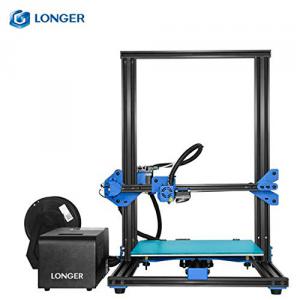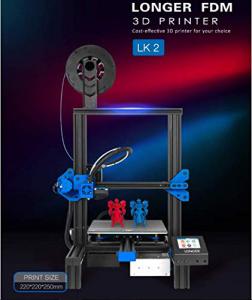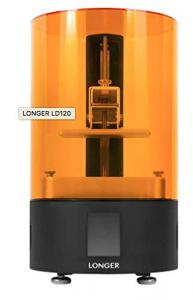Introduction to 3D Printing
3D Printing Processes and Printing Materials
Three-dimensional (3D) printing in recent years has become the main focus of public and media attention as a technology has at last approached the quality necessary for direct production of end-use devices. 3D printing is a method of manufacturing that materials such as metal or plastic are deposited onto one another in layers to produce a three-dimensional product and are offered with different options in terms of feature detail, materials, and costs. 3D printing is a game changing that allows for the manufacturing of complex geometric shapes that can be mass-customized compare to traditional manufacturing technologies such as forging, machining, casting, and injection molding. 3D printing has already been proved workable in many medical applications including the manufacture of custom prosthetic devices and dental implants.
The most popular methods of standard 3D printing include vat photopolymerization, powder bed fusion, material extrusion, sheet lamination, directed energy deposition, material jetting, and binder jetting. Industry has realized the manufacturing advantages of these method and is investing in production systems to create complex structures for rocket engines, airplane parts, customized parts for cars. Although 3D printing technologies have advanced that several materials can be used to manufacture including polymers, ceramics, and metals, the products are still generally limited to a number of compatible materials. This paper will explain some popular 3D printing methods as well as different kind of filaments that printers use.
3D printing processes
It is really a big challenge for people that are new to the world of 3D printing. What is the difference between types of 3D printing like SLA and SLS, for example? With so many different acronyms, it can be pretty confusing. Although there are many different printers available, only 9 basic types of 3D printing method that currently exist. This section will explain 3 main methods that have significantly effective uses for consumers, professionals and businesses.
Fused Deposition Modeling - FDM
Material extrusion is the most common device and the cheapest one in the consumer market. Its system includes a spool of filament that is injected into the printer and is ready to be fed into a platform extrusion nozzle. The nozzle then later will be heated, and one motor will push the filament through the nozzle, causing filament to melt. Extrusion head then moves along designed coordinates, laying down the melted filament layer by layer onto the base. Filament stays on the base will cool down and solidify. This method sometimes requires a necessary support depending on the complex of geometry, such as a design has a overhanging parts. Some basic filaments for the FDM method are Polylactic Acid (PLA), and Acrylonitrile Butadiene Styrene (ABS) which will their details will be given in next section.
Stereolithography - SLA
Stereolithography is a 3D printing process that uses a UV laser to treat liquid resin into hardened plastic. The most common SLA-system is upside-down, or, inverted, stereolithography. Resin is either poured into a tank by users, or dispensed automatically from a cartridge depending on the machine. At the beginning of the print, a build platform is lowered into the resin, leaving only a thin layer of liquid in between the platform and the bottom of the tank. Then galvanometers direct the UV laser through a transparent window at the bottom of the resin tank, drawing a cross section of the 3D model and selectively hardening the material. The model is built in layer by layer with each layer less than a hundred microns thick. When machine completes one layer, the part is peeled from the bottom of the tank, allowing fresh resin flow beneath, and the platform is lowered once again. It builds the part from top to bottom, the build platform lifts the part upwards, out of the resin. SLA has a wide range of materials with diverse physical properties that engineers, product designers, sculptors, jewelers, or dentists can apply. SLA printers consistently produce higher resolution objects and higher accuracy than FDM printers.
Selective Laser Sintering - SLS
Selective laser sintering, also known as powder bed method, is a rapid prototyping method that build a physical part from 3D Computer-aided design (CAD) data in a matter of hours. Materials such as powdered NylonX, and powdered NylonXI are mainly used in SLS method. This method creates a light-weight, heat and chemical resistant, highly durable parts, so it is a perfect choice for manufacturing without the expenses to tooling. The process will first divide the CAD data into thin layers, then transfer them to manufacturing equipment. One leveling roller will spread a thin layer of powdered material across on the powder bed. From above, a CO2 laser traces the cross-section on the materials, making them heated and fused together. When one layer is complete, the powder bed is lowered to make space for the next layer. New powder material will be introduced from the powder cartridge and rolled out smooth. The unused materials will also be recycled. The process will repeat layer by layer until the part is finish. While building one layer, an un-inserted powder will act as extra elements to support the structures. Complex designs or assemblies once thought impossible are now being redesigned with SLS.
Please continue your read at https://threerollmill.com/documents/3D_Printing_Processes_Materials.pdf . The author is Mr. Frank Huynh.
Please check out our 3D Printers https://threerollmill.com/3d-printers.html.
This information is brought to you by Torrey Hills Technologies, LLC, San Diego, CA 92121. We export heat sinks, belt furnaces and three roll mills to 60+ countries.
ken kuang
Torrey Hills Tech, LLC
+1 8585586666
email us here
Visit us on social media:
Facebook
Twitter
LinkedIn
LK2 Assembly video
Legal Disclaimer:
EIN Presswire provides this news content "as is" without warranty of any kind. We do not accept any responsibility or liability for the accuracy, content, images, videos, licenses, completeness, legality, or reliability of the information contained in this article. If you have any complaints or copyright issues related to this article, kindly contact the author above.



